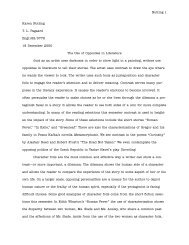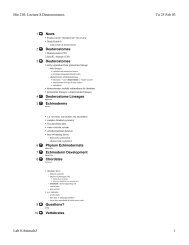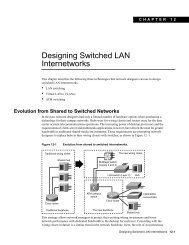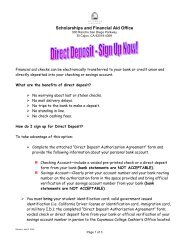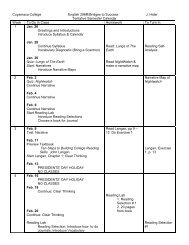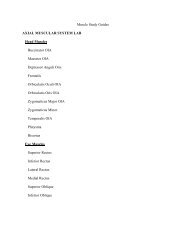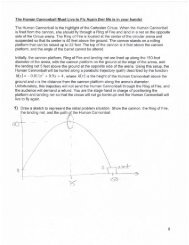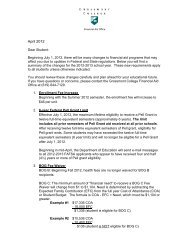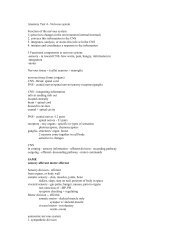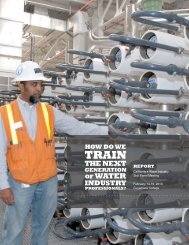Create successful ePaper yourself
Turn your PDF publications into a flip-book with our unique Google optimized e-Paper software.
Note: It is important to recognize that the subnet mask, of the route in the routing table, is used todetermine the minimum number of left-most bits that must match between the route and the destinationIP address of the packet.2.2 <strong>The</strong> Route Lookup Process and Child RoutesNow lets take a closer look at what happens when there is a parent route, which of course means thereare also child routes. As we saw in the previous section, in order for there to be a match there must be aminimum match of left-most bits between the destination IP address and the parent route. <strong>The</strong> minimumnumber of bits that must match is equal to that of the classful mask of the parent route. This classfulmask is only displayed when there are VLSM child routes.As we see in Figure 5, the subnet mask of /24 is displayed in the parent network route of 172.16.0.0 forthe three subnets of 172.16.1.0, 172.16.2.0, and 172.16.3.0.Before any child routes are examined for a match, there must be a match between the classful address ofthe parent route and the destination IP address of the packet. For these particular parent/child routes,before any of the 172.16.1.0, 172.16.2.0, and 172.16.3.0 child routes are examined, there must be amatch of the 16 left-most bits (the classful subnet mask of the Class B route 172.16.0.0) and thedestination IP address of the packet. If there is a match, then Step 3 states, “If the matching network is aparent route, then the subnet routes are looked through to find the best-matching route.”<strong>The</strong> route lookup process:Step 1. <strong>The</strong> router begins by finding a network route, ultimate or parent that matches the IP packet’sdestination address.Step 2. If the matching network is an ultimate route (not including subnet routes), and there are no morespecific routes, this is the route used to forward the packet.Step 3. If the matching network is a parent route, then the subnet routes are looked through to find thebest-matching route.Step 4. If there is no match of an ultimate or a subnet within a parent route, than what happens dependsupon the whether or not the router is using in classful or classless routing behavior.Note: If VLSM is being used, then the subnet mask is specified with the individual route.Figure 5RouterA#show ip routeCodes: C - connected, S - static, I - IGRP, R - RIP, M - mobile, B - BGPGateway of last resort is not set172.16.0.0/24 is subnetted, 3 subnetsC 172.16.1.0 is directly connected, FastEthernet0C 172.16.2.0 is directly connected, Serial0R 172.16.3.0 [120/1] via 172.16.2.2, 00:00:00, Serial0R 192.168.1.0/24 [120/1] via 172.16.2.2, 00:00:00, Serial0RouterA#Lets see an example!7



